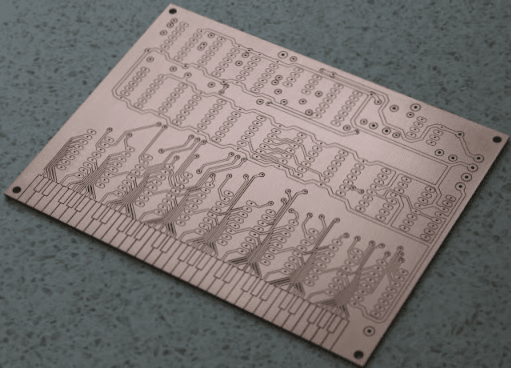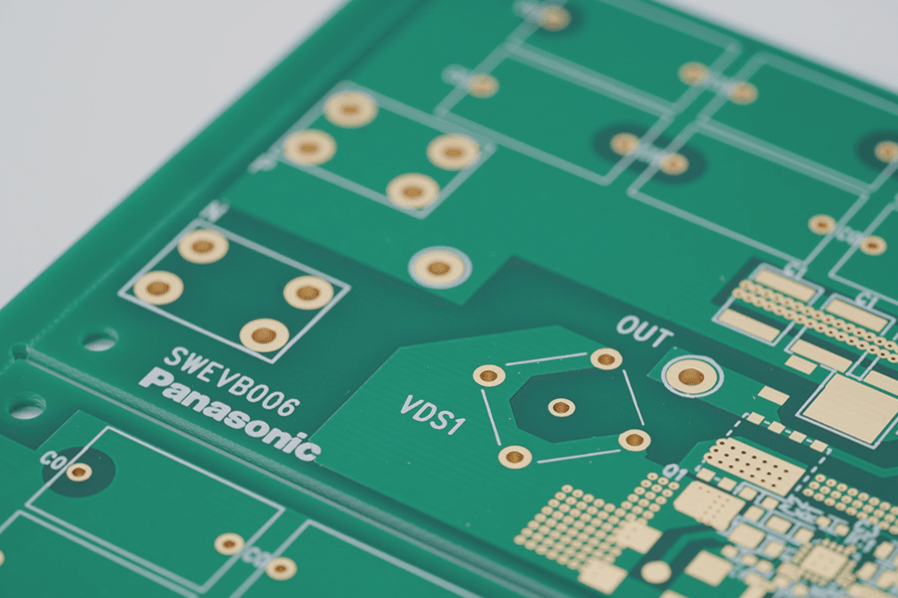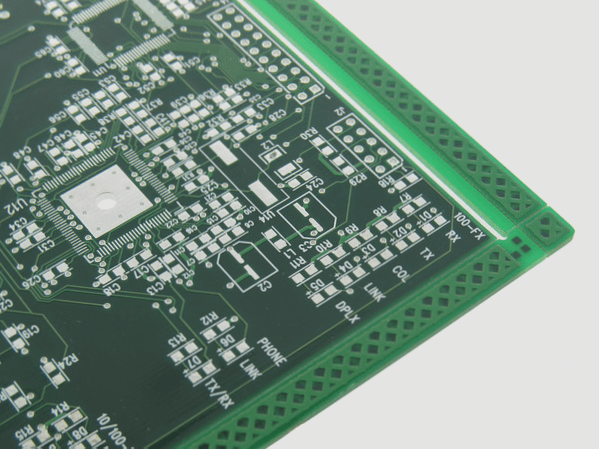In the wake of developments in science and technology, PCB manufacturing technology has improved a lot. Every field in electronic technology urges PCB manufacturers to elevate the corresponding technology in PCB fabrication. When it comes to printed circuit boards which are in a computer or a mobile phone, materials like gold or silver are adopted, leading to a larger gap among different printed circuit boards.
What Is Surface Finish
PCB surface finish is an inter-metallic joint between the bare copper of the solderable area of the printed circuit board and the components.

How Does Surface Finish Affect PCB
There are three different colors in the printed circuit board surface finish: gold, silver, and light red. Gold is the most expensive, silver is second, and light red is the cheapest. It is easy to judge from the color of the PCB whether manufacturers did shoddy work.
1. Bare Copper Board
The traces inside the board are mainly pure copper, that is, bare copper board.

Bare Copper Printed Circuit Board
The advantages and disadvantages are obvious:
Advantages:
1. Low cost
2. Smooth surface
3. Good solderability (Not oxidized)
Disadvantages:
1. Bare copper board is susceptible to acid and humidity.
It should not be stored for a long time and must be used up within 2 hours after unpacking because copper is easily oxidized when exposed to the air; it cannot be used for double-sided boards, because the second side is already oxidized after the first reflow soldering. If there is a test point, solder paste must be printed to prevent oxidation, otherwise, it will not be in good contact with the probe.
2. Copper is easily oxidized when exposed to the air and must have a protective layer. Some people think that copper is blonde. The blonde is the protective layer on the copper but not the copper itself
When it comes to plate a large area of gold on the circuit board, there is another surface finish – ENIG.
2. Gold-plated Board
Gold is real gold. Even if a very thin golden layer will account for nearly 10% of the cost of the circuit board. In Shenzhen, many merchants specialize in washing out gold through waste-printed circuit boards, which gains a good income.
Using gold as a plating layer is one for facilitating soldering and the other for preventing corrosion. Even the gold finger of the RAM that has been used for several years still shining as before. If the materials are copper, aluminum, and iron, they will have now been rusted into a pile of scraps.
The gold-plated layer is widely used in the component pads, gold fingers, connector shrapnel, and other positions of the printed circuit board. If you find that the color of the surface is silver you should call the consumer rights hotline immediately, the manufacturer must cheat on workmanship and materials, failing to use materials properly instead of other metals to fool customers.
The motherboards of the most widely used mobile phone circuit boards are mostly gold-plated boards, immersed gold boards. Computer motherboards, audio, and small digital circuit boards are generally not gold-plated boards.

Printed Circuit Board with Immersion Gold Surface Finish
The advantages and disadvantages of immersion gold technology are not difficult to draw:
Advantages:
1. Not easy to oxidize
2. Long shelf-life
3. The surface of the gold-plated board is flat, which is suitable for soldering fine-gap pins and components with small solder joints.
The first choice for console keyboard & display board (such as mobile phone PCB). Because reflow soldering can be repeated many times without reducing its solderability, the gold-plated board can be used as a substrate for COB (Chip On Board) wire bonding.
Disadvantages:
1. High cost
2. Poor solderability
Because of the electroless nickel plating process, it is easy to cause a black disk. The nickel layer will oxidize over time, and the long-term reliability appears as a problem.
Now we know that gold is gold. But does silver is silver? Of course not, it is tin!
3. HASL
The silver board uses HASL (hot air solder leveling), which sprays a layer of tin on the outer layer of the copper circuit. It cannot provide long-term contact reliability like gold. Though HASL does not affect the PCB whose components have been soldered, the solderability will be influenced by the pads that have been exposed to the air for a long time, such as grounding pads and pin sockets.
It is prone to oxidation and corrosion in the long term, resulting in poor contact between the board and components. Generally, for small digital products, the surface finish choice is HASL. The reason is that HASL is cheap.

Lead-Free HASL Surface Finish
Its advantages and disadvantages are summarized as:
Advantages:
1. Lower price
2. Good solderability
Disadvantages:
1. Not suitable for soldering pins with fine gaps and components that are too small, because the surface flatness of the HASL board is poor.
2. Easy to generate solder beads in PCB processing, resulting in short circuits to fine-pitch components.
When it comes to HASL used in the double-sided SMT process, it is easy to re-melt and generate tin beads or similar droplets that are affected by gravity into spherical tin dots, which will reduce the flatness of the surface of PCB. It is important because the flatness affects soldering.
4. OSP
OSP is the abbreviation of organic soldering film. It used an organic surface finish but not metal, leading to a cheaper price than HASL.
The only function of this organic film is to ensure that the inner copper foil will not be oxidized before soldering. This layer of film volatilizes as soon as it is heated during soldering and solders the copper traces and the components together. However, OSP is not resistant to corrosion. If an OSP circuit board is exposed to the air for ten days, the components cannot be soldered.
Many computer motherboards use OSP technology. Because the area of the circuit board is too large, it is expensive to use immersion gold.

Printed Circuit Board with OSP
The advantages and disadvantages are:
Advantages:
1. It has all the soldering advantages of bare copper plates, and even the expired board can also take a surface finish again.
Disadvantages:
2. Easily affected by acid and humidity.
When it is used in secondary reflow soldering, OSP needs to be completed within a certain period. Moreover, the second reflow soldering has poor solderability.
3. The shelf-life of the OSP board is short, which can not exceed three months. And it must be finished within 24 hours after opening the package.
Disadvantages:
OSP is an insulating layer, so the test point must be printed with solder paste to remove the original OSP layer to contact the pinpoint for electrical testing.
Wellcircuits have multiple choices for the surface finish in the PCB assembly service. They do a lot of low to mid-volume runs in a high-mix setting, and with ENIG, they can buy bare boards in a larger economical quantity and store them for several years while doing multiple smaller runs to customers’ release schedules. It’s one more way we ensure high quality and flexibility to meet the customers’ needs.
